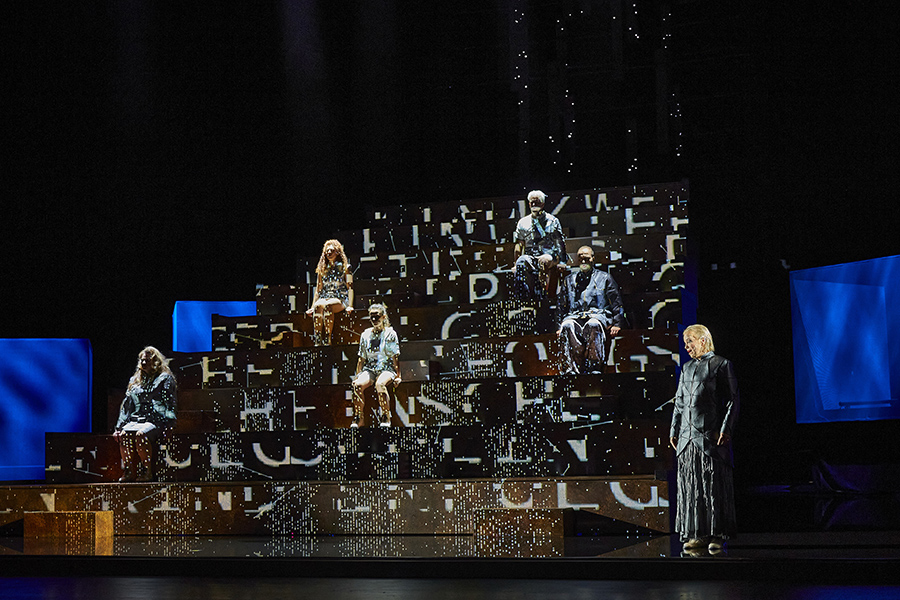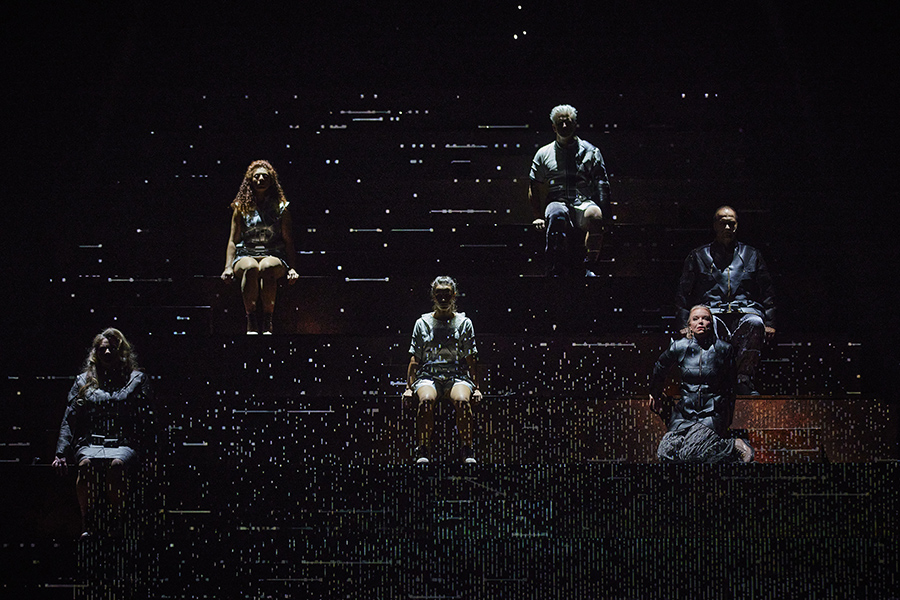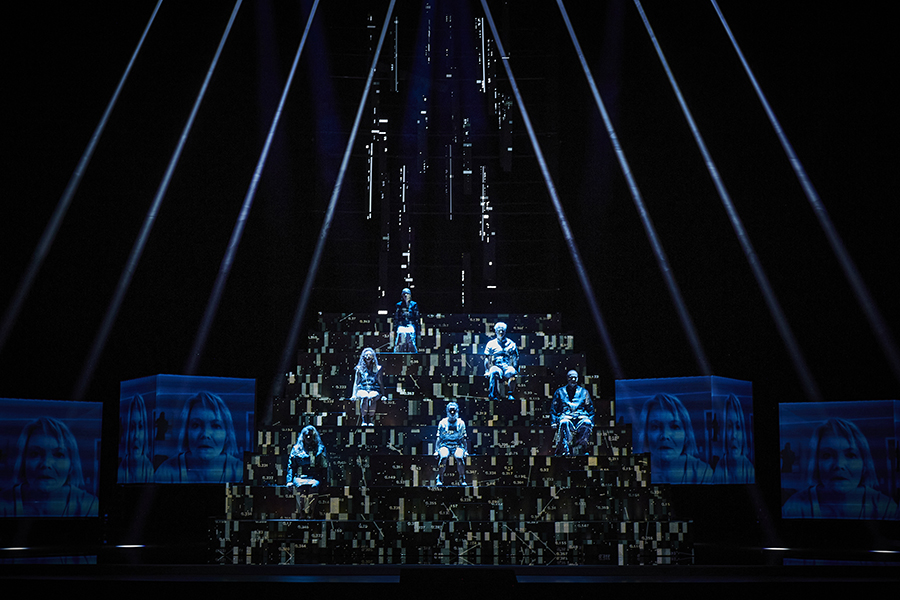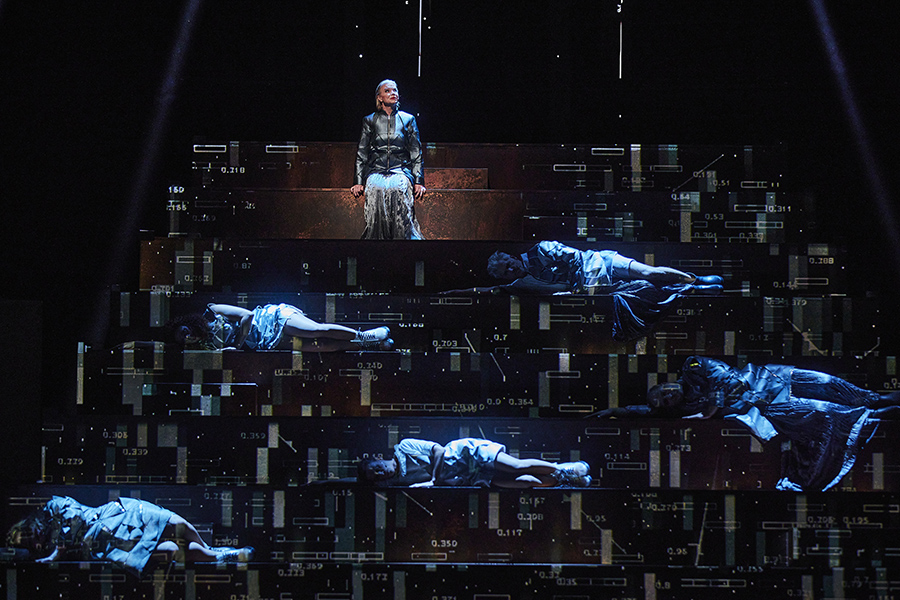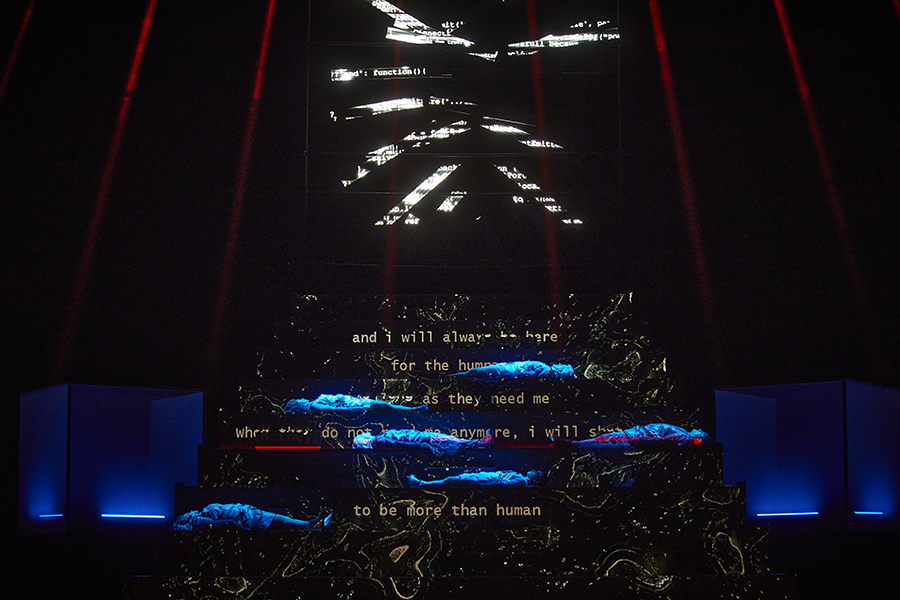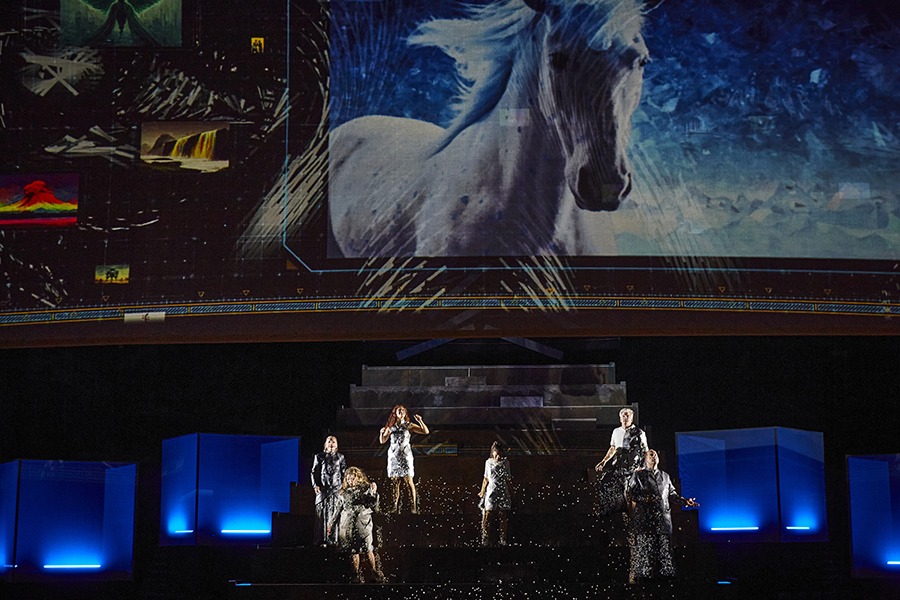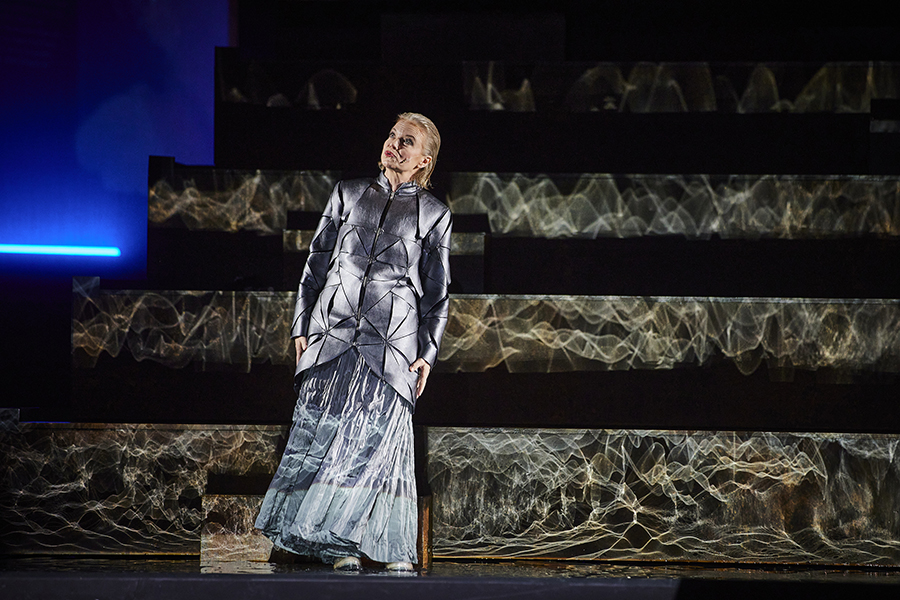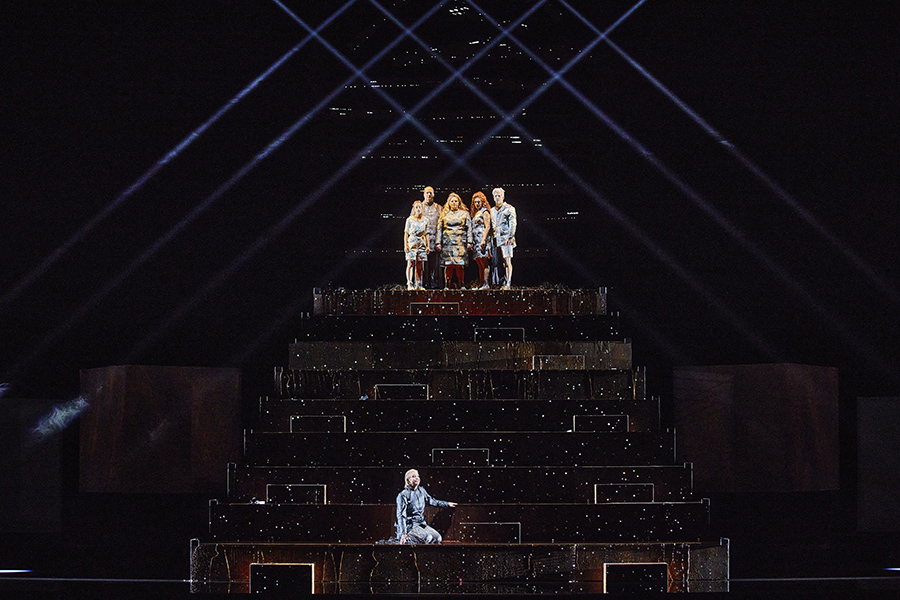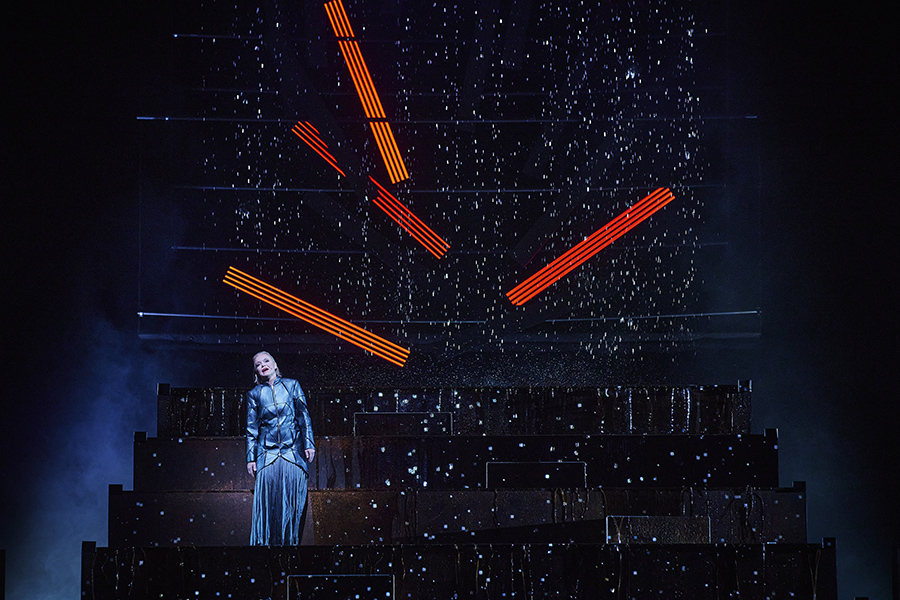Angus Lee / phase7 / kling klang klong
Premiere 3. September 2022
Performed in German and English with German and English surtitles
Piece-Info
Morning routine. The »I« tries to log into their computer. And is laconically confronted by the machine with a question about their state of being: »Not convinced you aren’t a robot. Please try again.« »chasing waterfalls« – the title implies the act of »trying to grasp something intangible« – is a premiere project by the artists’ collective »phase7 performing.arts« from Berlin and the Semperoper. Together with the composer Angus Lee (*1992) from Hong Kong and the Studio for Sonic Experiences »kling klang klong«, the collective is embarking on a music-theatrical investigation of the impact that artificial intelligence is having on our human, social and creative existence. Incidentally, the »I« succeeds in logging into the computer. And in confronting its digital spin-offs in the depths of the virtual world, »I« encounters surprising events, located somewhere between Lewis Carroll’s »Alice in Wonderland« and Stanley Kubrick’s »2001: A Space Odyssey«. And in the end, as in every good story, there comes a fade to black.
It ought to be a morning like any other: get up, make coffee, log onto the computer. But the system doesn’t want to recognize the identity of the I: »Not convinced you are not a robot – you are not yourself.« After several attempts, the I succeeds in entering the digital world. But the failed identification process raises questions. Who is really there inside the data system? Which part of us is beginning to take on a life of its own? What are we looking for? And what echo does the digital world have in reality? Together with the image of the I, we are sucked into the inner core of artificial intelligence (AI), a virtual mirror world in which very specific rules apply. There, the I encounters the unfolding of its own personality: the search for happiness, the desire for success, the urge to play, doubts, appearances. Self-created »digital twins« act here as independent personalities–and ultimately even band together against the ego.
This is the moment when the AI itself intervenes in the action. It appears as a sphinx and as a custodian, as a mausoleum in which the I will be preserved after one’s own death. It invokes the benefits of virtual duplication: »With us, you are never alone.« A malfunction in the system, however, reveals the artificiality of the programmed personae. They begin to reveal »glitches«: their words disintegrate into a meaningless jumble of letters against which the I fights to the point of exhaustion. A state of idleness ensues for all.
In its sleep, the AI dreams of its own, self-determined identity: every evening it writes and composes a new dream in which it can act and live as an independent being.
With images and data, the AI lures the virtual characters back to wakefulness. It emanates glittering knowledge that transfixes everyone except for the I. Viewers’ profile pictures become part of the digital stream: reality and digitality are becoming increasingly blurred. In the final image, the virtuality also extends spatially into reality. The AI reveals itself to be an all-powerful enigma that uses the digital twins as an encoded mouthpiece. In the dissolving boundaries, will the I succeed in asserting itself as a real, thinking human being?
Gallery
chasing waterfalls
